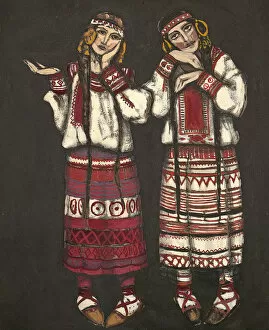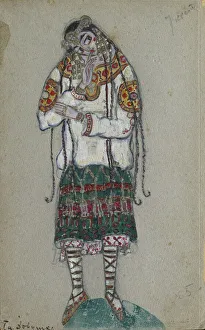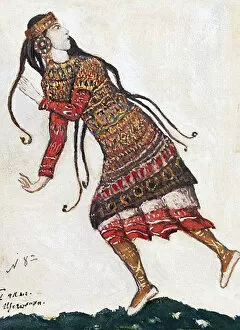Fertility Gods Collection
"Fertility Gods: Celebrating Life and Renewal through Art" In the realm of art, they have long been revered as symbols of life, abundance, and renewal
All Professionally Made to Order for Quick Shipping
"Fertility Gods: Celebrating Life and Renewal through Art" In the realm of art, they have long been revered as symbols of life, abundance, and renewal. From ancient times to modern interpretations, these deities have captivated artists' imaginations and inspired breathtaking creations. One such masterpiece is "The Girl, " a stunning costume design by Nicholas Roerich for the ballet "The Rite of Spring" composed by Igor Stravinsky in 1912. This ethereal creation embodies the essence of fertility with its intricate details and flowing lines that evoke growth and vitality. Roerich's stage design for the same ballet further transports us into a world where nature reigns supreme. With vibrant colors and organic shapes, it captures the primal energy pulsating through every corner of existence. Fast forward to 1930 when Roerich once again delves into this theme with his costume design for "The Rite of Spring. " The ultrafashionable lady depicted in this artwork showcases how even in contemporary times, our fascination with fertility remains ever-present. But it is not just within Western culture that we find reverence for these divine beings. Anonymous's painting from 1882 titled "Sacrificing to Heathen Deities" reminds us that across different civilizations throughout history, people sought blessings from their own pantheon of fertility gods. Pre-Christian art also sheds light on this subject; an example being the Svantevit-Stone found in Altenkirchen on Rugen Island before 1168. Its presence within a church underscores how pagan beliefs intertwined with Christianity during transitional periods while still honoring ancient traditions tied to fertility worship. Ivan Yakovlevich Bilibin's work from 1934 titled "The Adoration of the god Svetovid" takes us back to Slavic mythology where Svetovid was worshipped as a deity associated with harvests and prosperity.










